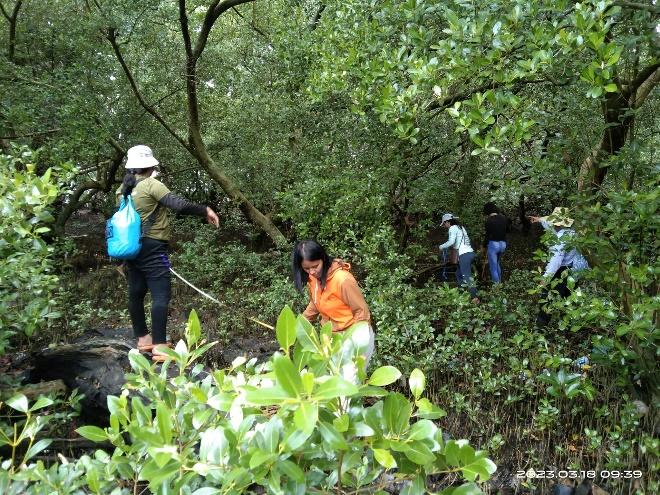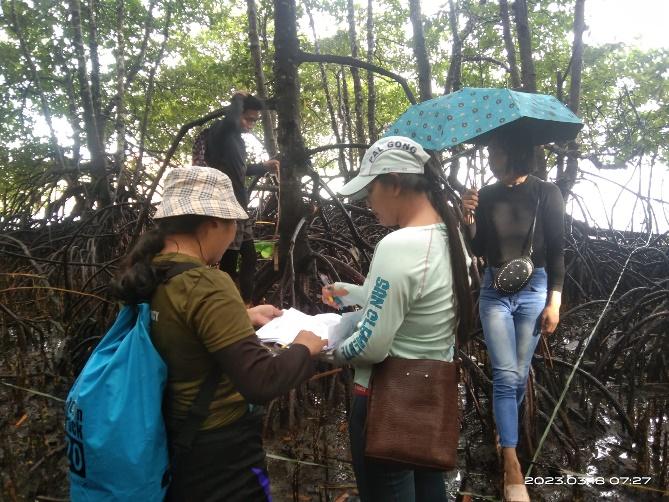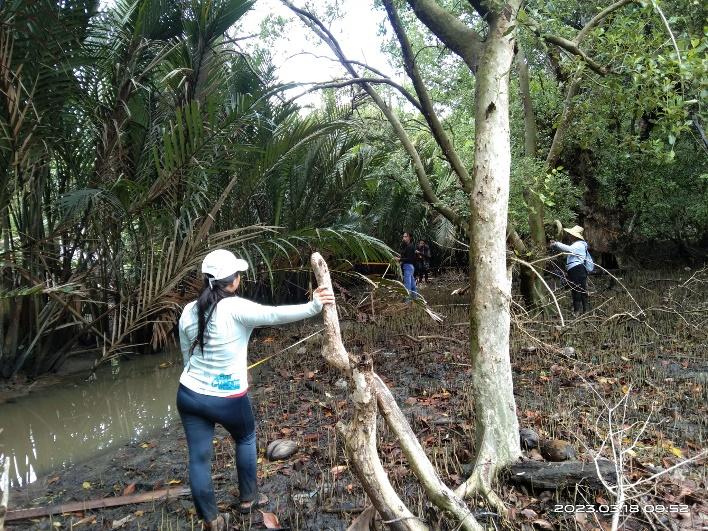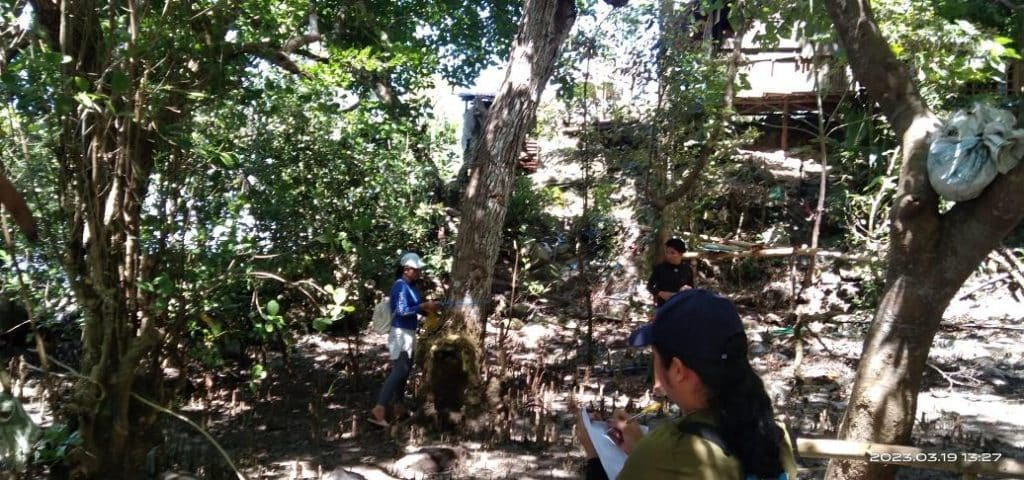USTP Panaon, BSMB explore mangrove structure and biodiversity in coastal barangays
By Reysan D. Toylo, USTP Panaon BSMB Faculty
Share:
Mangroves are vital ecosystems that provide numerous ecological benefits and serve as a refuge for diverse plant and animal species. In a recent undergraduate thesis titled “Mangrove Structure in Selected Coastal Barangays of Lopez Jaena, Misamis Occidental,” conducted in March 2023, the mangrove ecosystem in three barangays—Eastern Poblacion, Katipa, and Biasong—was comprehensively studied. The research sheds light on the presence of mangrove species, their diversity, and various structural attributes, yielding valuable insights into the ecological dynamics of these coastal areas.

The study identified a total of eleven true mangrove species thriving in the selected barangays: Rhizophora apiculata, Rhizophora mucronata, Rhizophora stylosa, Avicennia alba, Avicennia marina, Avicennia officinalis, Avicennia rumphiana, Sonneratia alba, Nypa fruticans, Lumitzera racemosa, and Bruguiera cylindrica. Among these species, Rhizophora apiculata emerged as the most abundant, demonstrating its resilience in all surveyed areas. Conversely, Lumnitzera racemosa exhibited the lowest occurrence.
Diversity analysis highlighted variations among the three barangays, with Eastern Poblacion boasting the highest recorded diversity of mangrove species and Katipa exhibiting the lowest. Notably, Sonneratia alba showcased the tallest average height of 24.99 meters, while Katipa claimed the tallest individual mangrove tree, soaring to an impressive height of 28.44 meters. Additionally, Sonneratia alba displayed the largest average diameter at breast height (DBH) at 1.4 meters, while Katipa housed the largest recorded DBH, reaching up to 1.75 meters.

Examining the density of mangrove species across the three coastal barangays, Rhizophora apiculata emerged as the most prevalent species. Particularly, Eastern Poblacion exhibited the highest density, with Rhizophora apiculata representing 41.51% of the mangrove population in that area. Conversely, Lumitzera racemosa and Nypa fruticans displayed the lowest frequency in terms of density, indicating their relatively limited presence.
Ultimately, the study concluded that there were no significant differences in the abundance, DBH, or tree height of mangroves among the studied areas in Lopez Jaena, Misamis Occidental. This observation suggests remarkable stability in the mangrove ecosystem’s structural characteristics across these coastal barangays.

The findings from this research provide valuable information for the management and conservation of mangroves in Lopez Jaena, Misamis Occidental. Recognizing the dominant species, understanding biodiversity patterns, and assessing structural attributes are crucial steps in formulating effective conservation strategies. These insights contribute to our understanding of the ecological dynamics within mangrove ecosystems and emphasize the importance of preserving these invaluable habitats.

The undergraduate thesis on mangrove structure in the selected coastal barangays of Lopez Jaena, Misamis Occidental, provides comprehensive insights into the presence of mangrove species, their diversity, and their structural attributes. With Rhizophora apiculata as the most abundant species and Sonneratia alba exhibiting remarkable height and DBH, the mangroves in these areas showcase their resilience and unique characteristics. These findings serve as a foundation for conservation efforts and highlight the significance of preserving the mangrove ecosystem.
















